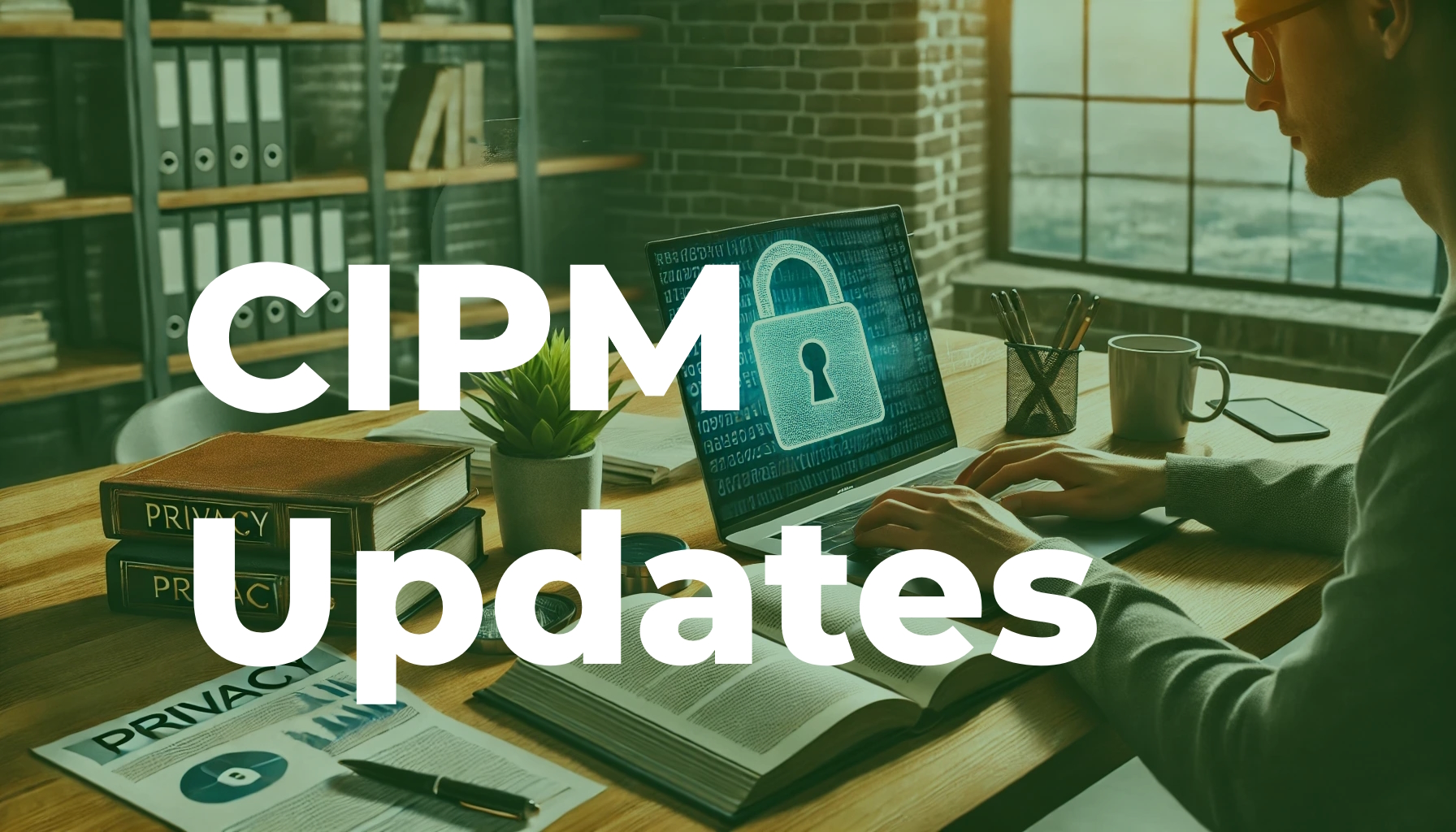CIPM Curriculum Updates
The Certified Information Privacy Manager (CIPM) credential remains a vital certification for professionals managing privacy programs. As the privacy field evolves, so does the CIPM curriculum, reflecting new priorities and best practices. The recent updates, effective from September 2nd, are more about refining the existing body of knowledge than introducing entirely new concepts. They bring an increased focus on understanding an organisation's business context, improving stakeholder collaboration, and integrating privacy principles throughout all processes. To support candidates, 22Academy is also updating its preparation materials to align with these changes.
Understanding Business Context in Privacy Management
A significant shift in the updated curriculum is the enhanced focus on understanding an organisation’s business context, particularly its business model and risk appetite. This falls under Domain I, which addresses defining the scope and strategy of a privacy program. Privacy professionals must now demonstrate a deeper understanding of how privacy strategies align with organisational goals and risk profiles.
By grasping the business context, privacy managers can tailor privacy initiatives to fit the company’s broader strategic objectives. For example, if a company operates in a high-risk environment, its privacy framework must be designed to mitigate those risks effectively. This knowledge is essential not only for developing privacy strategies but also for making informed decisions that balance privacy with business needs.
Data Retention and Disposal Policies
Domain II of the CIPM curriculum introduces a new focus on creating and implementing data retention and disposal policies. These policies are crucial for ensuring compliance with legal and regulatory requirements and for managing the risks associated with holding data longer than necessary.
The curriculum now underscores the importance of defining clear guidelines for how long data should be retained and how it should be disposed of when no longer needed. These measures help organisations minimise their exposure to data breaches and other risks associated with data storage. By incorporating data retention and disposal policies into their privacy programs, privacy professionals can ensure that their organisation remains compliant and reduces unnecessary risk.
Stakeholder Collaboration in Privacy Programs
Domain III of the updated curriculum emphasises the need for collaboration with stakeholders, particularly when evaluating technical controls. Privacy is no longer just the responsibility of the privacy team; it requires input from various departments, including IT, legal, and operations.
This increased focus on collaboration highlights the importance of involving relevant stakeholders in the design and implementation of privacy measures. By working together, privacy professionals and other departments can ensure that technical controls are both effective and aligned with organisational goals. This collaborative approach not only strengthens the privacy program but also fosters a culture of privacy throughout the organisation.
Comprehensive Risk Mitigation Measures
Domain IV introduces a broader approach to risk mitigation, incorporating technical, administrative, and organisational measures. This comprehensive strategy ensures that privacy risks are addressed from multiple angles, enhancing the overall resilience of the organisation’s privacy framework.
Previously, privacy programs may have focused primarily on organisational measures, but the new curriculum encourages privacy professionals to integrate technical controls such as encryption and access management, alongside administrative safeguards like policies and procedures. This layered approach helps mitigate residual risks more effectively and prepares candidates to address the complexities of modern privacy challenges.
Privacy by Design Integration
Privacy by Design (PbD) principles have become increasingly integral to privacy programs, and this is reflected in Domain IV. The curriculum now stresses the importance of integrating privacy principles throughout the System Development Life Cycle (SDLC) and business processes.
This means that privacy considerations must be embedded at every stage of development, from initial design through implementation and maintenance. By ensuring that privacy is built into the foundation of systems and processes, organisations can reduce risks and better comply with privacy regulations. This comprehensive integration of PbD principles is essential for candidates preparing for the CIPM exam, as it forms a core part of modern privacy management.
Incident Impact Assessment and Future Breach Mitigation
The final significant update is in Domain VI, where the focus shifts from general risk assessments to specific incident impact assessments. This change recognises that understanding the precise impact of a data breach or privacy incident is crucial for effective incident response.
Incident impact assessments allow privacy professionals to evaluate the consequences of a breach on the organisation, data subjects, and other stakeholders. This targeted approach to incident management helps organisations respond more effectively and minimise the damage caused by privacy incidents. Additionally, the curriculum now emphasises the importance of reducing both the likelihood and impact of future breaches, encouraging a continuous improvement mindset in incident response planning.
Key Changes in the Updated CIPM Curriculum
In summary, the most significant changes discussed in this article focus on expanding the scope and depth of privacy management within organisations. Below are the key areas of focus that candidates should prioritise when preparing for the updated CIPM exam:
- Understanding Business Context: Emphasis on understanding the organisation's business model and risk appetite when defining the privacy program scope and strategy. (Domain I)
- Data Retention and Disposal: Introduction of data retention and disposal policies and procedures as part of creating policies and processes across the privacy program life cycle. (Domain II)
- Stakeholder Collaboration: New focus on collaborating with relevant stakeholders to identify and evaluate technical controls. (Domain III)
- Broader Risk Mitigation Measures: Expansion to include technical, administrative, and organisational measures to mitigate residual risks. (Domain IV)
- Privacy by Design Integration: Comprehensive integration of privacy principles throughout the System Development Life Cycle (SDLC) and business processes. (Domain IV)
- Incident Impact Assessment: Shift from general risk assessment to specific incident impact assessment in incident handling and response procedures. (Domain VI)
- Future Breach Mitigation: Emphasis on implementing changes to reduce both the likelihood and impact of future breaches in the incident response plan. (Domain VI)
These updates reflect a more detailed and comprehensive approach to privacy management, with a strong focus on aligning privacy programs with business objectives, enhancing collaboration, and strengthening risk management strategies. Ensuring familiarity with these areas will be crucial for success in the new version of the CIPM exam.
Conclusion
The latest updates to the CIPM curriculum reflect the growing complexities and responsibilities of privacy management in today's world. By focusing on a deeper understanding of business contexts, enhancing collaboration, and integrating comprehensive risk management strategies, the curriculum ensures that privacy professionals are well-prepared to handle modern privacy challenges.
For those preparing for the CIPM exam, staying informed about these changes is essential. To aid in your preparation, 22Academy.com offers resources like The Self-Study Success Kit, The Ultimate Prep Kit, and a single Trial Exam, all designed to help you navigate the updated curriculum. Investing time in these materials will ensure that you are well-equipped to succeed in the exam and in your career as a privacy professional.



